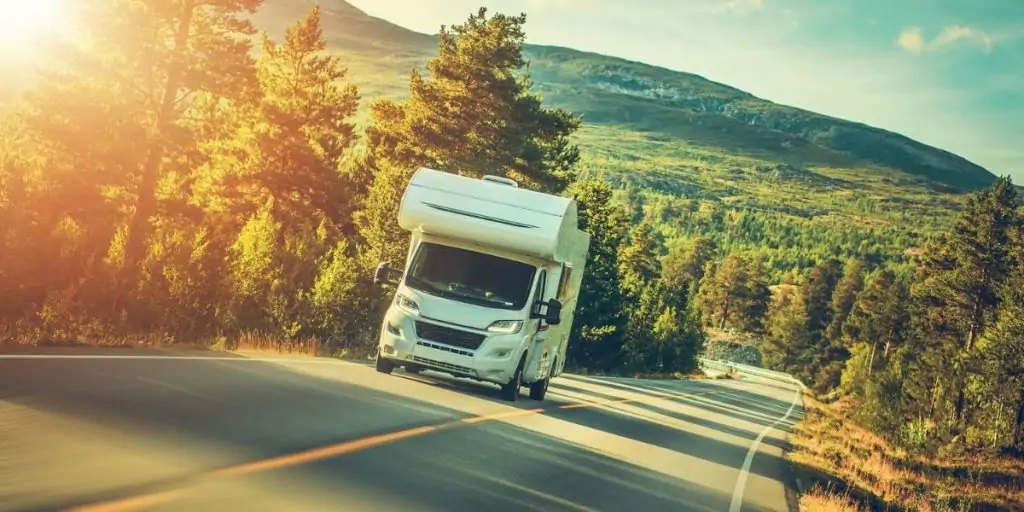Planning on driving in Europe? Our guide contains everything you need to know about what to take with you and how to prepare. We’ve also included lots of handy links to where to find the most up to date information for further reading.
Required equipment for driving in Europe
Many European countries expect drivers to carry certain equipment with them at all times. These vary from country to country, so be sure to check the exact requirements for the places you’re travelling to and through.
Below is a list of equipment that is compulsory or recommended in the most common EU countries.
- GB car sticker (compulsory in all countries, including Ireland)
- Reflective jackets (compulsory in many countries). There should be one for each passenger, and they must be kept within the cabin of the car rather than the boot
- Warning triangle (compulsory in most countries)
- Headlamp beam deflectors. Depending on your car, you will either need to adjust the beam manually or use deflector stickers
- First-aid kit
You may also want to pack the following:
- Spare car light bulbs
- Spare wheel or puncture sealing kit
- Jack and wheel brace
- Locking wheel nut key
- Jump leads
- Torch with spare batteries
- An up-to-date road map or satnav
- Take extra supplies of medication in case you can’t get these abroad
- Copies of important documents
For further advice on what you need for driving in European countries, you should check the European Commission’s website.
Documents to prepare
When driving in Europe, there are several documents that you must carry at all times.
- A full and valid driving licence
- An International Driving Permit when necessary. If this is not currently needed in the country you’re travelling to, the rules may change after Brexit (more on this below), so keep an eye on the situation
- A copy of your DVLA driver record and a licence check code if needed.
- Proof of ID (passport)
- V5 Certificate (this must be the original, not a copy)
- Proof of vehicle insurance. You may need to tell your insurer that you’re travelling abroad, and some insurance companies provide only third party cover when you do
- Travel insurance documents
- LEZ (Low Emission Zones) or Crit’air (Clean Air) sticker (if required – check here for further information)
Driving in Europe after Brexit
Unfortunately, there’s still a bit of uncertainty around how Brexit will affect driving in Europe. The UK is currently scheduled to leave the EU on 31 October 2019 at the latest, with the option to leave earlier if a deal can be reached.
If the UK leaves the EU without a deal on 31 October 2019, the Government say that drivers will need extra documentation to drive in the EU and EEA.
You will need an International Driving Permit and a motor insurance Green Card. If you have plans to travel before the leave date, it may be worth arranging these documents just in case.
If you’re travelling via Dover or the Eurotunnel, be aware of Operation Block. This is the name for contingency plans to manage freight traffic on major roads, if a no-deal Brexit causes significant delays at the border between Dover and Calais. Before you travel, check Highways England for the latest updates and planning advice if delays are possible.
The Government has an in-depth guide to driving in Europe after Brexit bookmark this page and keep an eye on it before your trip.
Low Emission Zones
Over 200 cities in 10 countries across Europe are now operating Low Emission Zones (LEZ). These are zones where the most polluting vehicles are charged an access fee, or banned completely. Most of the LEZ only apply to vans and lorries, but they can affect some cars – particularly zones in France, Germany, and Italy.
If you’re planning on driving in Europe, you should check if any of the destinations you’ll be visiting or driving through have an LEZ and how that will affect you.
In some countries, you may need to pay a toll to visit certain areas, and/or display a sticker for your vehicle. You can search by city or by country on the Urban Access Regulations site for clarification.
Low emission zones are also known as:
- Environment Zones
- Umweltzonen (Germany)
- Milieuzones (Netherlands)
- ZCR, Zone à Circulation Restreinte (France)
- Lage-emissiezone (Belgium)
- Clean Air Zones (England)
- Miljøzone (Denmark)
- Miljözon (Sweden)
- Lavutslippssone (Norway)
- ZTL ambiente (Italy)
France has recently introduced a Crit’air sticker system for their Low Emission Zones (which are known in France as ZCR). This multi-category sticker system is used to identify a vehicle’s air pollutant emissions.
In some ZCR’s, vehicles with certain Crit’Air sticker categories can be refused entry either all the time, or on certain days.
You can get your sticker from the official French government website for €3.11 plus postage. Be careful of third-party scam websites, which significantly overcharge for the stickers.
8 things to do before you travel
- Brush up on the rules of the road, and the speed limits, in the country your visiting and travelling through. Remember some countries display speed limits and distances in kilometres, instead of miles.
- Adjust your headlamps ready for driving on the right-hand side of the road.
- Make a travel pack containing all the documentation you will need to comply with the legal requirements of your destination. Don’t forget to take note of your travel insurance and vehicle insurance policy numbers.
- Let your car insurance provider know that you are travelling abroad, and make sure you are fully covered for this.
- Complete the emergency contact section of your passport, and be sure to let someone at home know your travel plans and route.
- Check if you need an International Driving Permit.
- If you’re using a satnav, be sure to download the map for the country you’re visiting and travelling through.
- Make sure your vehicle is in good working order, and get it serviced if necessary. Check the oil, coolant, and windscreen washer levels under the bonnet, and check your tyres are in good condition.


